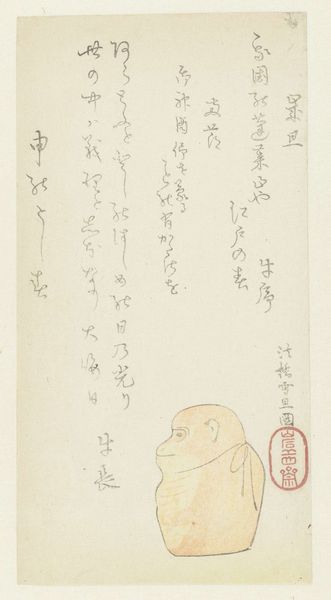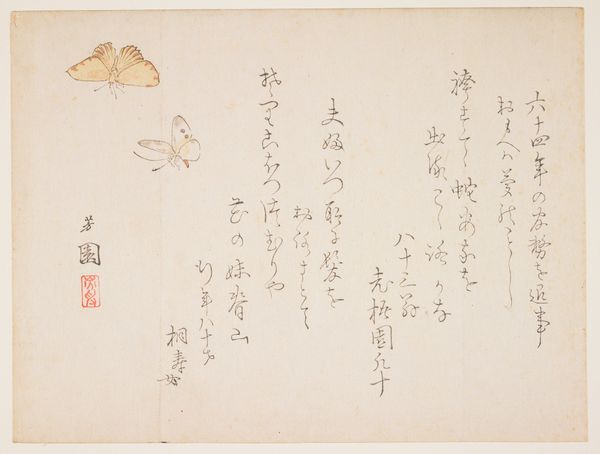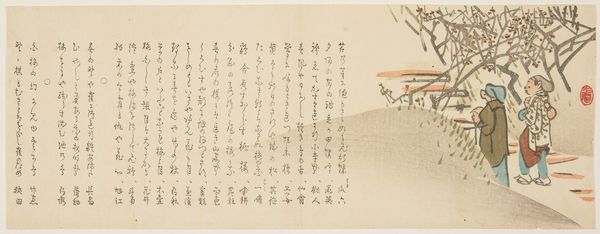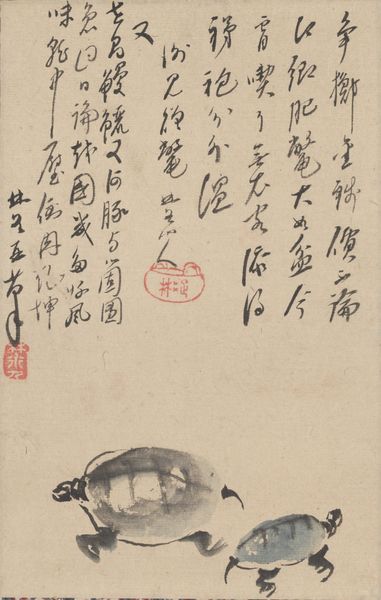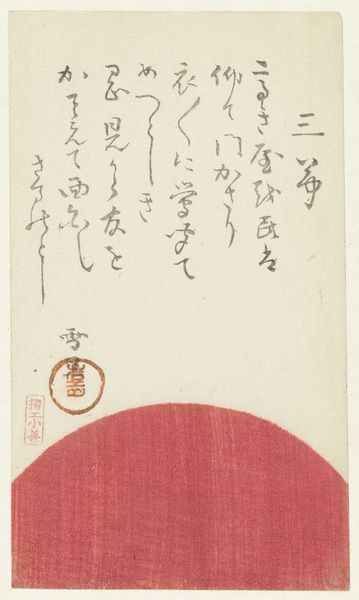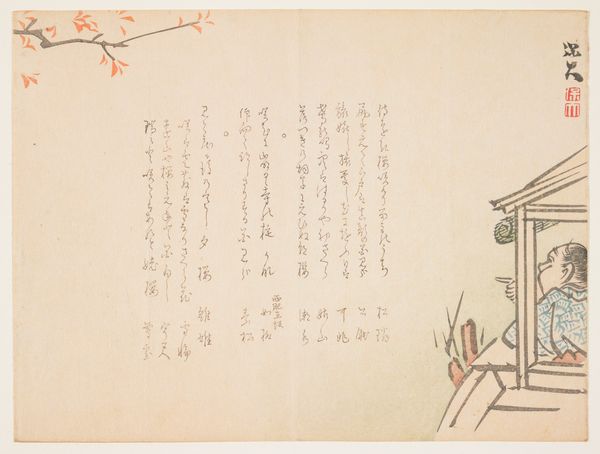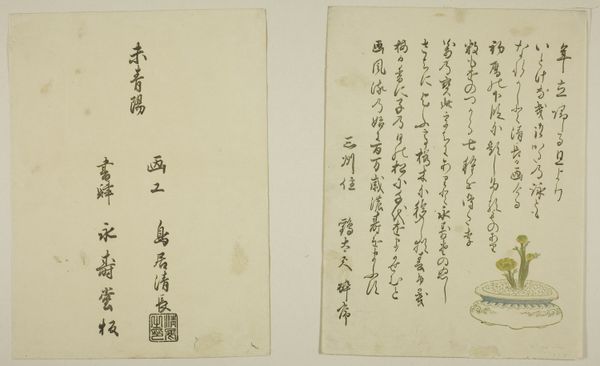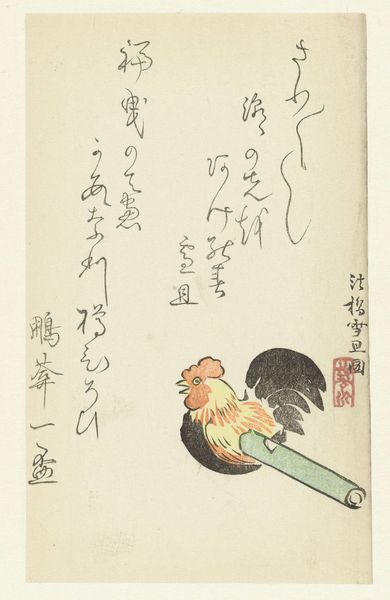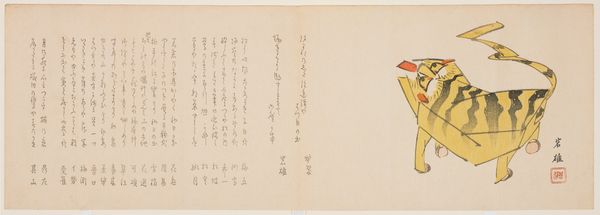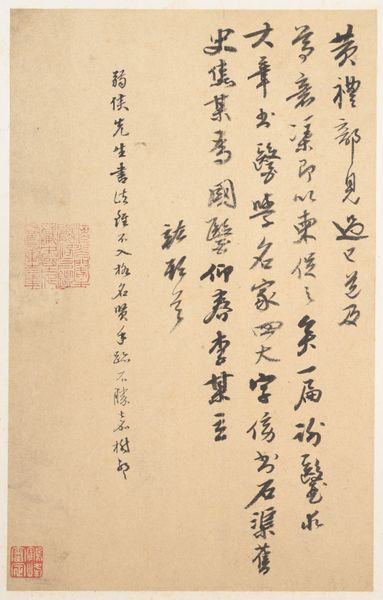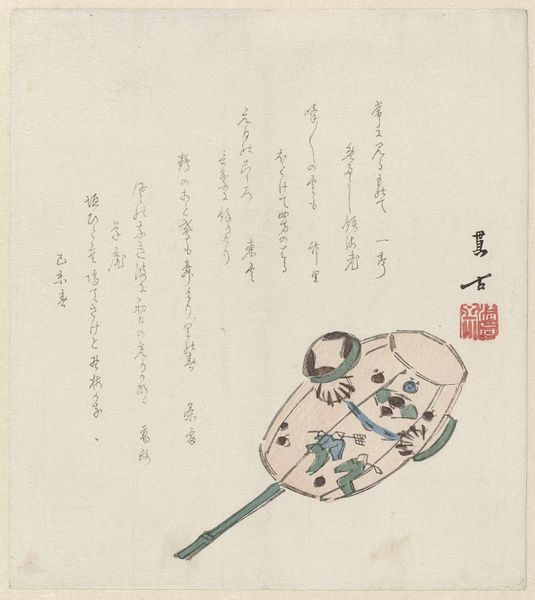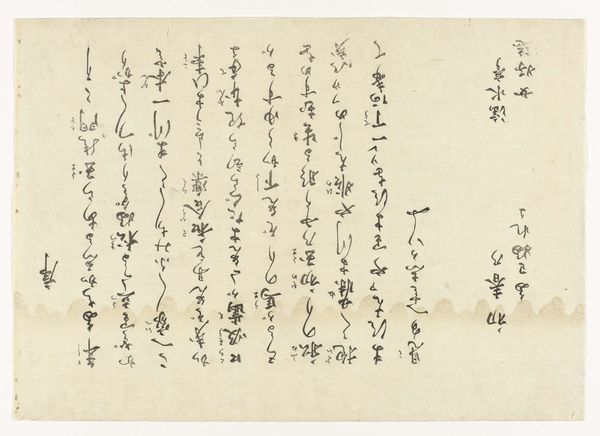
drawing, paper, ink
#
drawing
#
asian-art
#
landscape
#
ukiyo-e
#
figuration
#
paper
#
ink
Dimensions: height 193 mm, width 139 mm
Copyright: Rijks Museum: Open Domain
Editor: So, this is Hasegawa Settan's "Chick Hatching from an Egg," made in 1813, using ink on paper. It's simple, but charming. There’s a delicacy to the drawing. How do you read it? Curator: Considering Settan's "Chick Hatching from an Egg" through a materialist lens, the drawing’s simplicity belies a complex interplay of labor and resources. The paper itself, its sourcing, and the ink – what minerals were ground to make this pigment? These details provide context. How was paper production situated in 19th century Japan and who held control? Editor: That's interesting – it’s easy to overlook the raw materials themselves. But what about the *drawing* part of the drawing? Curator: Even Settan's use of line can be viewed as a study of resource management. Note the ink's density and controlled flow as a conscious choice, relating to economy and means of artistic production within constraints of that era. The ukiyo-e style, often associated with mass production, here, rendered uniquely, becomes a meditation on labor. Do you agree that the hatching chick alludes to social renewal and regeneration? Editor: I see your point now about connecting the drawing to the wider systems. The chick breaking free... it's almost as if Settan's subtly hinting at larger social shifts. So it is not just about a single animal; rather, about those making the drawing and what was implied. Curator: Precisely. Analyzing "Chick Hatching from an Egg" through materiality reveals not only artistry but cultural dynamics ingrained in Settan’s means and methods. Editor: This reframing encourages an awareness that makes one consider all material origins and choices. I appreciate you emphasizing production so acutely!
Comments
No comments
Be the first to comment and join the conversation on the ultimate creative platform.
